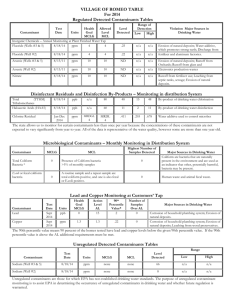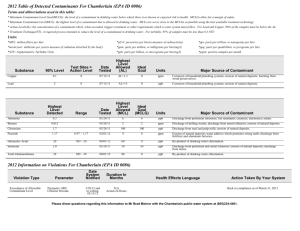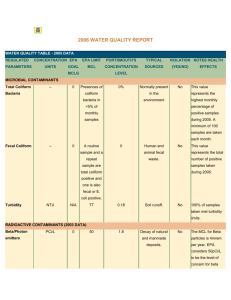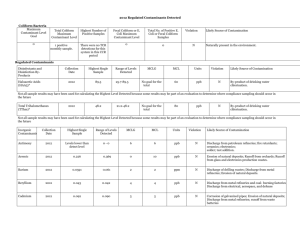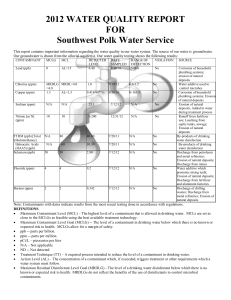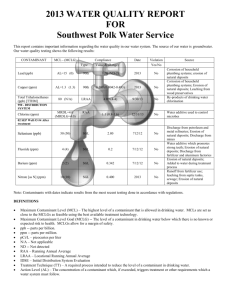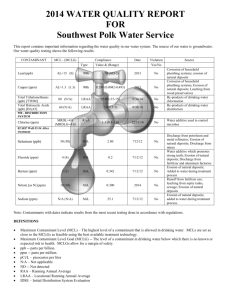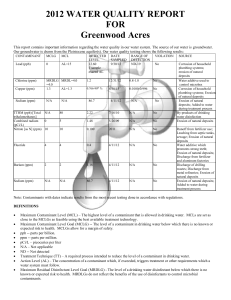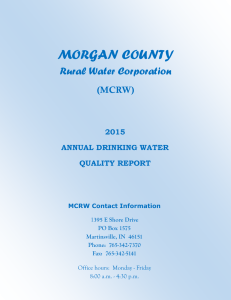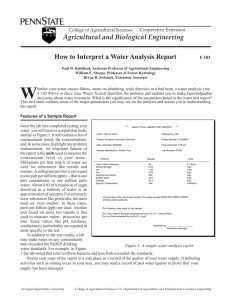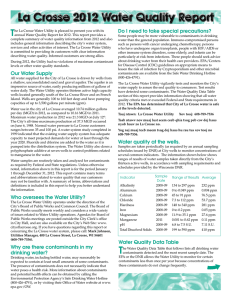Southwest Water Treatment Plant
advertisement
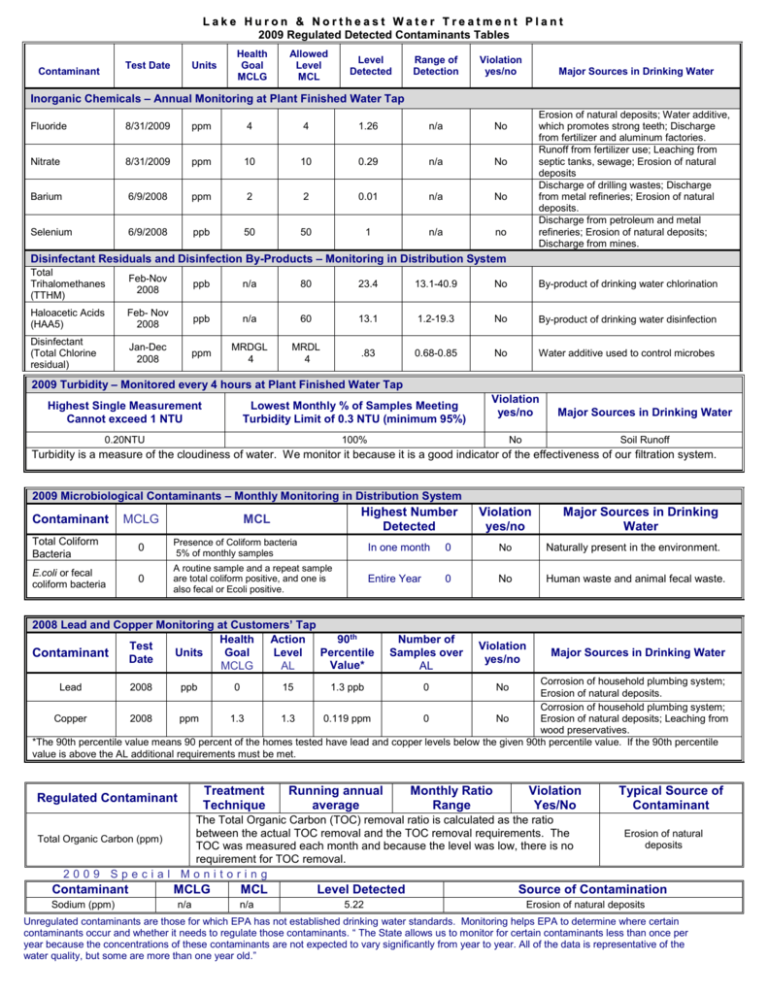
Lake Huron & Northeast Water Treatment Plant 2009 Regulated Detected Contaminants Tables Test Date Contaminant Units Health Goal MCLG Allowed Level MCL Level Detected Range of Detection Violation yes/no Major Sources in Drinking Water Inorganic Chemicals – Annual Monitoring at Plant Finished Water Tap Fluoride 8/31/2009 ppm 4 4 1.26 n/a No Nitrate 8/31/2009 ppm 10 10 0.29 n/a No Barium 6/9/2008 ppm 2 2 0.01 n/a No Selenium 6/9/2008 ppb 50 50 1 n/a no Erosion of natural deposits; Water additive, which promotes strong teeth; Discharge from fertilizer and aluminum factories. Runoff from fertilizer use; Leaching from septic tanks, sewage; Erosion of natural deposits Discharge of drilling wastes; Discharge from metal refineries; Erosion of natural deposits. Discharge from petroleum and metal refineries; Erosion of natural deposits; Discharge from mines. Disinfectant Residuals and Disinfection By-Products – Monitoring in Distribution System Total Trihalomethanes (TTHM) Feb-Nov 2008 ppb n/a 80 23.4 13.1-40.9 No By-product of drinking water chlorination Haloacetic Acids (HAA5) Feb- Nov 2008 ppb n/a 60 13.1 1.2-19.3 No By-product of drinking water disinfection Disinfectant (Total Chlorine residual) Jan-Dec 2008 ppm MRDGL 4 MRDL 4 .83 0.68-0.85 No Water additive used to control microbes 2009 Turbidity – Monitored every 4 hours at Plant Finished Water Tap Highest Single Measurement Cannot exceed 1 NTU Lowest Monthly % of Samples Meeting Turbidity Limit of 0.3 NTU (minimum 95%) 0.20NTU 100% Violation yes/no Major Sources in Drinking Water No Soil Runoff Turbidity is a measure of the cloudiness of water. We monitor it because it is a good indicator of the effectiveness of our filtration system. 2009 Microbiological Contaminants – Monthly Monitoring in Distribution System Contaminant Highest Number Detected MCL MCLG Violation yes/no Major Sources in Drinking Water Total Coliform Bacteria 0 Presence of Coliform bacteria 5% of monthly samples In one month 0 No Naturally present in the environment. E.coli or fecal coliform bacteria 0 A routine sample and a repeat sample are total coliform positive, and one is also fecal or Ecoli positive. Entire Year 0 No Human waste and animal fecal waste. Violation yes/no Major Sources in Drinking Water 2008 Lead and Copper Monitoring at Customers’ Tap Health Action 90th Test Units Goal Level Percentile Contaminant Date Value* MCLG AL Number of Samples over AL Corrosion of household plumbing system; Erosion of natural deposits. Corrosion of household plumbing system; Copper 2008 ppm 1.3 1.3 0.119 ppm 0 No Erosion of natural deposits; Leaching from wood preservatives. *The 90th percentile value means 90 percent of the homes tested have lead and copper levels below the given 90th percentile value. If the 90th percentile value is above the AL additional requirements must be met. Lead 2008 ppb 0 15 Treatment Technique Regulated Contaminant 1.3 ppb Running annual average 0 Monthly Ratio Range No Violation Yes/No The Total Organic Carbon (TOC) removal ratio is calculated as the ratio between the actual TOC removal and the TOC removal requirements. The TOC was measured each month and because the level was low, there is no requirement for TOC removal. 2009 Special Monitoring Total Organic Carbon (ppm) Contaminant Sodium (ppm) MCLG n/a MCL n/a Level Detected 5.22 Typical Source of Contaminant Erosion of natural deposits Source of Contamination Erosion of natural deposits Unregulated contaminants are those for which EPA has not established drinking water standards. Monitoring helps EPA to determine where certain contaminants occur and whether it needs to regulate those contaminants. “ The State allows us to monitor for certain contaminants less than once per year because the concentrations of these contaminants are not expected to vary significantly from year to year. All of the data is representative of the water quality, but some are more than one year old.”
